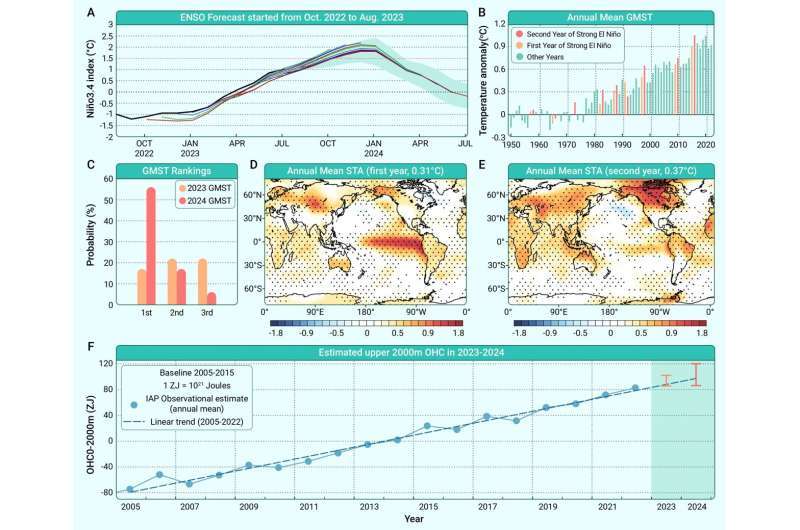THE LATEST
The effects of an unprecedented El Niño on climate change in China

Researchers from the Institute of Atmospheric Physics (IAP) of the Chinese Academy of Sciences have predicted that a strong El Niño event will cause global surface temperature to rise and trigger several climate crises in 2023–2024. The El Niño event is known for releasing massive heat into the atmosphere, which will change atmospheric circulation patterns, influence tropical-extratropical interactions, and impact subtropical jets, monsoons, and even polar vortices, resulting in a rapid surge in Global Mean Surface Temperature (GMST).
GMST, which integrates global land surface temperature and sea surface temperature, is one of the vital indicators of climate variability and global warming. Its interannual variability is primarily dominated by ENSO events, with El Niño events having a particularly strong influence due to their capacity to release immense heat into the atmosphere, leading to anomalies in atmospheric circulation and changes in the surface energy balance.
The IAP team's ensemble prediction system indicated earlier in 2023 that there would be an El Niño event in boreal autumn, which may be maintained throughout winter. Based on historical climate data and prior studies, the IAP team revealed the potential extent and consequences of the extreme warming expected in 2023–2024. Their findings indicate a 17% probability that the 2023 GMST will become the highest recorded since 1950 and a staggering 61% probability that it will rank among the top three. In 2024, these probabilities suddenly rise to 56% and 79%, respectively.
During the development of a strong El Niño in 2023, warm anomalies are expected to predominantly affect the tropical central-eastern Pacific, the Eurasian continent, and Alaska. However, in the following year, 2024, warm anomalies are likely to encompass the entire continents, significantly increasing the chance of land-based heatwaves, droughts, and wildfires.
According to Prof. Zheng Fei, corresponding author of the study, "In addition to the surge in surface temperatures, the strong El Niño in 2023-2024 is predicted to trigger a cascade of climate crises."
There are several climate issues that we are currently facing, such as intensifying marine heat waves, ocean deoxygenation, reduced oceanic diversity, damage to marine ecosystems, rising sea levels, and decreasing crop yields. Additionally, China may encounter several climate anomalies during this period. For example, the suppressed winter monsoon in 2023 might result in higher winter temperatures in most regions of China, which could also increase the risk of air pollution. In 2024, northern China may face spring drought, while southern regions will most likely experience extreme rainfall and flooding during the summer season.
To summarize, the strong El Niño that is expected to happen in 2023-2024 will likely cause global surface temperatures to break records and trigger climate crises all over the world. This emphasizes the urgency of taking action to mitigate the consequences of climate change and reduce the risk of further environmental damage.
